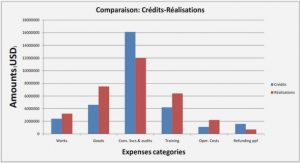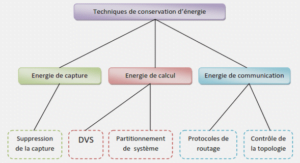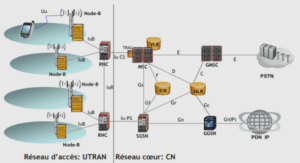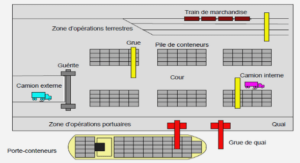Caste Development
Honey bees are holometabolous insects, meaning that individuals go through multiple phases during development, including a complete metamorphosis, before emerging as an adult. Four stages occur within the same comb : egg, larva, pupa and adult (Jay 1963). The embryo develops during the egg stage. Afterwards, the larva emerges from the egg and grows rapidly. During the pupal stage, the organism is in an inactive state, and metamorphosis occurs. Finally, the adult honey bee, either worker, queen, or drone, emerges from the comb and immediately initiates its functions (Winston 2010). The duration of development before emerging into an adult differs for each caste.
Queens, workers and drones take 16, 21 and 24 days to develop, respectively (Winston 2010). Female caste differentiation depends on the quality and quantity of food provided by the worker bees during their early development (Haydak 1943;Jay 1964). Female larvae can develop either into queens or workers during the first three days after the egg has been laid (Shuel and Ddxon 1960; Jay 1964). The first 48 h after egg emergence, the female larva is bipotent, meaning that she can follow one of two different developmental pathways (Winston 2010). During these two days, female larvae are fed royal jelly and it is at the third day that feeding differs and determines which developmental path is executed. Royal jelly is a creamy and viscous glandular secretion from the worker’s hypopharyngeal gland (Hebert 2010), composed of water (60-70%), sugar (10-16%), crude protein (12-15%), lipids (3-6%), traces of salts, free amino acids, and vitamins (reviewed in Buttstedt et al. 2013). Of note, royal jelly contains a protein called royalactin that helps larvae develop more ovarioles in the ovaries (Kamakura 2011).
Mating
Honey bees are polyandrous and this behaviour is not found in most social insects (Gencer et al. 2011). Polyandry means that the queen mates with multiple males (Koeniger and Koeniger 2000; Palmer and Oldroyd 2000). It is an important reproductive phenomenon for honey bees because queens mated with only one drone produce weaker colonies (Fuchs and Schade 1994; Moritz and Fuchs 1998; Tarpy 2003; Page et al. 2006). Consequently, workers’ genetic profiles are more diversified and optimise their productivity (Koeniger et al. 2014). Honey bees have an intense male-biased sex ratio estimated at 1,000 to 2,000 males per reproductive female (Page and Metcalf 1984; Koeniger et al. 2014). The sex ratio is usually 1:1 in most animal species, including insects of the order Hymenoptera such as wasps, solitary bees and many ant species (Koeniger et al. 2014).
Honey bee mating takes place in the afternoon, during flight, when weather conditions are optimal, which must be suitable for both drones and the queen to fly to DCAs (Ruttner 1956; Koeniger et al. 2014). Weather is an important mating factor in northern regions. The ideal temperature for the mating flight is 18˚C for drones and 20˚C for the queen (Koeniger et al. 2014). Furthermore, mating will only occur during sunny days to avoid strong winds and rain (Koeniger et al. 2014). It is not known how drones and young queens, residing in the hive, are able to sense these weather conditions, since the hive is thermo regulated by workers.
Sperm Competition
It is still unclear whether sperm competition occurs in honey bees and how it works (Moritz 1986; Harbo 1990; Woyciechowski and Krol 1996; Shafir et al. 2009).
Sperm competition may occur after mating, within the oviducts, during sperm storage in the spermatheca or at the time of fertilization (Woyciechowski and Krol 1996; Shafir et al. 2009; Tofilski et al. 2012). Some proteins found in the seminal fluid might displace other males’ sperm (Harshman and Prout 1994), owever, it has not yet been demonstrated in honey bees(Woyciechowski and Krol 1996). Usually, spermatozoa from the same male will not compete against each other (Parker and Pizzari 2010). Studies have demonstrated that sperm viability is reduced when mixed in seminal fluids of other males than their own seminal fluid (den Boer et al.2010). However, these results are contradicted by another study, which found that sperm viability is not affected, and drones may possibly have sperm polymorphism (Tofilski et al. 2012).
Because of the extreme male-male competition and the high requirements of sperm by the polyandrous queen, males have required a high level of sperm viability (Hunter and Birkhead 2002). Moreover, since the queen mates for only a short period, natural selection for superior semen, which is considered as a large 22 ejaculate filled with highly viable sperm, is important (Hunter and Birkhead 2002;Simmons 2002; den Boer et al. 2008).
Instrumental Insemination
Instrumental insemination (I.I.) is performed in many species. Instrumental insemination is a crucial technique to control animal breeding to accelerate genetic selection. I.I. allows mating of domesticated honey bees to bypass the DCA. Many factors such as unfavourable climate and undesirable drones from other colonies can negatively affect genetic improvement through natural breeding selection. In 1927, I.I. was first successfully reported in honey bees (Watson 1927). The technique was then perfected during the 1940’s – 1950’s (reviewed in Cobey 1983; Laidlaw 1987). Instrumental insemination is currently a highly successful method for genetic control, for research, and for stock improvement (Cobey 2007), even though this technique is difficult to execute.
Instrumental insemination is difficult to introduce in the commercial industry because of the technical complexity and is thus more often used during scientific research. Therefore, it requires a minimum of expertise to perform I.I., such as advanced knowledge breeding principles and beekeeping skills to produce queens and drones (Cobey et al. 2013).
Semen Preservation
The development of I.I. in honey bees, has stimulated interest in semen preservation. The use of stored sperm greatly facilitates I.I., genetic improvement of the colony, and prolonging the honey bee production season. Both short and long-term semen conservation enhances selection and genetic improvement in honey bee populations (Collins 2000b). Thus, it would help developing superior honey bee stocks that are resistant to certain parasites such as varroa mites (Varroa destructor), for example (Collins 2000a). Furthermore, shipping honey bee semen instead of live drones would reduce the risk of spreading bee pathogens (Cobey 2007).
Additionally, in northern climates, such as in Canada, preserving semen could be very helpful to advance the honey production season (Collins 2000b). Since drones take more time to be sexually mature (36 days from egg to sexual maturation) and colonies only start producing them in late spring (May), I.I. can be used with semen collected the prior year to accelerate and elongate the season. Moreover, studies carried out in eastern Canada, where winters are cold and long, demonstrated that the early drones reared in May were less fertile than any other time of the beekeeping season (Rousseau et al. 2015). Therefore, by preserving semen during the winter, semen could be available sooner in spring for I.I. and have better sperm quality from drones reared late the previous summer. Successful sperm preservation is an effective strategy to preserve honey bee genetic diversity, and also to facilitate the selection of lineages tolerant to pests and diseases and prevent further colony loss (Cobey et al. 2013).
|
Table des matières
Introduction
Chapter I: State of Knowledge
1.1 Honey bees
1.2 Caste Development
1.3 Sexual Maturation
1.3.1 Queens
1.3.2 Spermatheca
1.3.3 Drones
1.3.4 Sexual Maturation of Drones
1.3.5 Drone Semen
1.3.6 Spermatozoa
1.4 Mating
1.5 Drone Competition
1.6 Sperm Competition
1.7 Instrumental Insemination
1.8 Semen Preservation
1.8.1 Semen Collection
1.8.2 Dilution and Diluent
1.8.3 Temperature
1.9 Cryopreservation
1.9.1 Dilution and Diluent
1.9.2 Cryoprotectant
1.9.3 Freezing Rate
1.9.4 Thawing
1.10 Centrifugation
1.11 Problematic
1.12 Project Objectives
1.13 Hypotheses
Chapter II
2.1 Résumé
2.2 Abstract
2.3 Introduction
2.4 Materials and Methods
2.4.1 Drone Management
2.4.2 Semen Collection
2.4.3 Semen Dilution
2.4.4 Fresh Semen at 16˚C
2.4.5 Cryopreservation at -196˚C
2.4.6 Centrifugation
2.4.7 Instrumental Insemination
2.4.8 Sperm Viability
2.4.9 Sperm Count Assessment
2.4.10 Statistical Analysis
2.5 Results
2.5.1 Preservation Temperatures
2.5.2 Sperm Centrifugation
2.5.3 Queen’s Spermatheca Assessment
2.6 Discussion
2.6.1 Cryopreservation for Long-Term Storage
2.6.2 Sperm Centrifugation to Improve Fertility
2.6.3 Fertility Parameters after Instrumental Insemination
2.6.4 Conclusion
2.7 Acknowledgments
Chapter III: General Conclusion
![]() Télécharger le rapport complet
Télécharger le rapport complet






